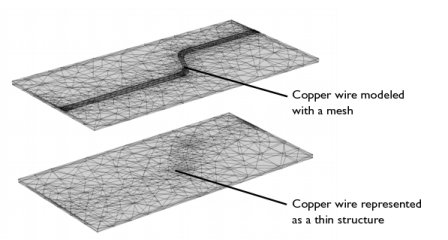

|
Adding Extra Dimensions to a Model and Using Extra Dimensions in the COMSOL Multiphysics Reference Manual.
|
|
It should be noted that when an extra dimension is used, the equations are written from the point of view of the extra dimension. In particular, the dtang() operator would correspond to ∇n since it performs the derivation along the extra line. In the thin structure boundary, dtang() would correspond to ∇t.
|